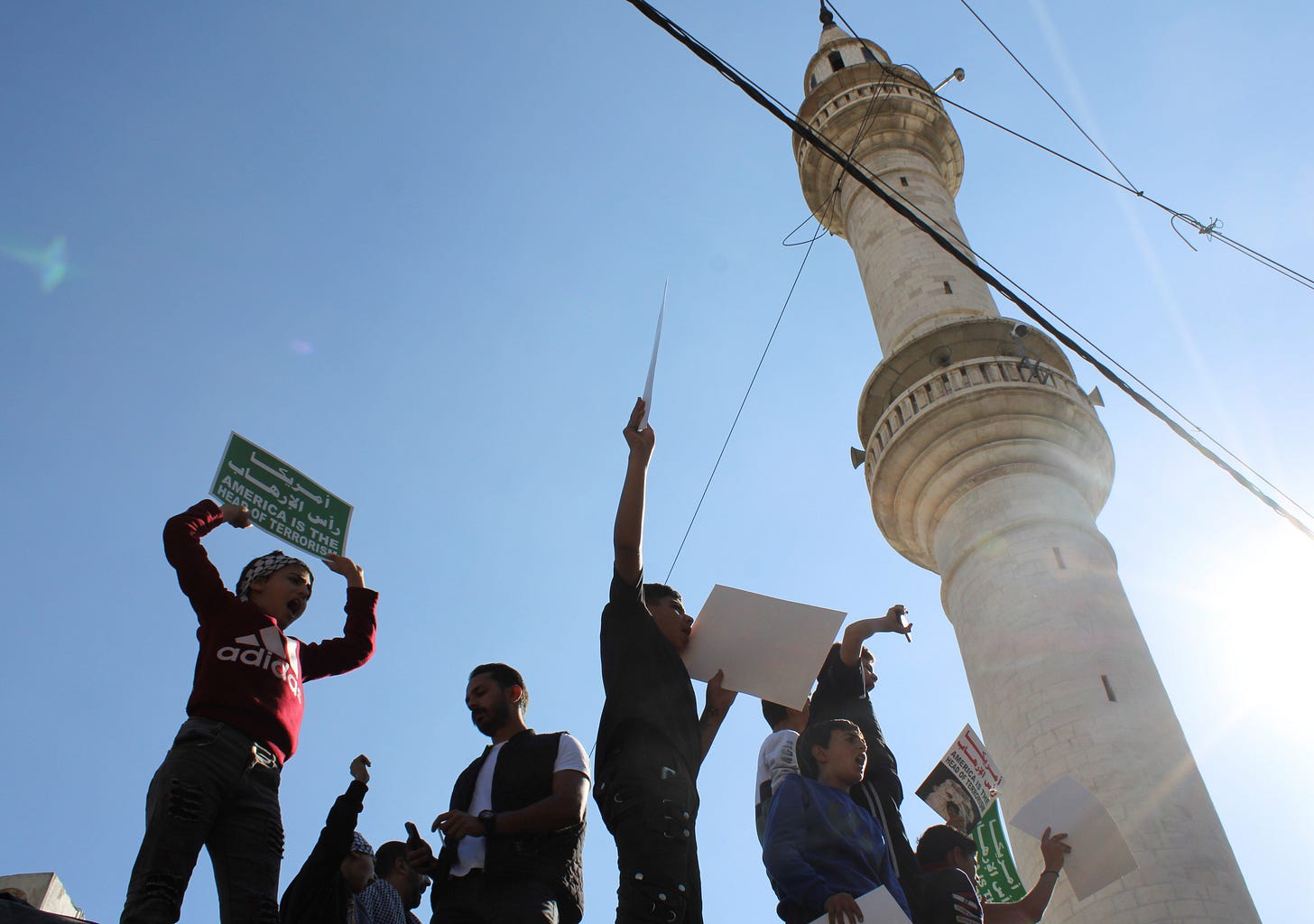Gaza War Fallout, Pakistan’s Anti-Refugee Crackdown, COP28, and More
This week on Inkstick Media.
Hello, everyone.
First, a quick introduction: I’m Patrick Strickland, the new managing editor at Inkstick Media. I have been a journalist for close to 13 years, reporting across Europe, the Middle East and North America. In that time, I have worked as a senior reporter for Al Jazeera English, the news editor at the Dallas Observer and the managing editor of Syria Deeply. Now, I’m thrilled to join Inkstick and look forward to updating you each week on the reporting and analysis we are working on.
Now, down to business: Even as a temporary (and now expired) ceasefire brought brief respite to Palestinians in Gaza, the consequences of the war continued to spill across the region’s borders. At Inkstick, Hanna Davis reported on the surging support for Hamas in Jordan, Joseph Roche and Iryna Matviyishyn provided a timely dispatch on youth disillusionment with the political process in the occupied West Bank, and Mohammed Ali* gave readers a glimpse of life in Gaza as the pause in fighting allowed residents to take stock of the devastation across the Strip.
But Gaza, where more some 1.8 million people have fled their homes, isn’t the only displacement crisis taking root. In Pakistan, the government’s plan to return Afghan refugees to their home country has sparked concern over whether Taliban authorities can effectively accommodate a mass influx of people. As Marcus Andreopoulos observes, the plan is part of a longstanding effort to push Afghans out of the country — and it could also backfire.
There’s plenty more, so check out the rest of this week’s pieces below.
And please follow us on Twitter, LinkedIn, Threads, Facebook, Instagram, and YouTube.
This week on Inkstick Media:
“Civil War Pushes Sudan to the Brink of Humanitarian Disaster” by Ashish Kumar Sen (Nov. 27)
After more than half of a year of war between Sudan’s military and the paramilitary Rapid Support Forces (RSF) group, Sudan is teetering on the brink of a widespread humanitarian catastrophe. The UN estimates that more than 9,000 people have been killed since fighting erupted in April, but as a reportedly genocidal RSF gains ground, the situation is poised to grow even worse for civilians. (This piece was originally published by the United States Institute of Peace.)
Tweet this.
“Between Hope and Despair: Gaza War Sharpens Generational Divide in West Bank” by Joseph Roche and Iryna Matviyishyn (Nov. 28)
In the Israeli-occupied West Bank, the Israeli war on Gaza has exposed a generational rift between those who still believe a political solution is possible and a younger, less politically inclined demographic. With five wars in Gaza since late 2008, a growing number of Palestinian youths appear opposed to negotiations and the possibility of a two-state solution.
Retweet this.
“Inside the Brief Quiet of Gaza’s Ceasefire” by Mohammed Ali* (Nov. 28)
A six-day pause in fighting afforded Palestinians in the war-ravaged Gaza Strip a brief reprieve from the onslaught of bombs and airstrikes. But the temporary truce also meant residents of the blockaded coastal enclave could survey the extent of destruction and loss the war has imposed on them. Worse still, most residents of the Strip cannot leave — a fact made even grimmer by the knowledge that the end of the truce means they are back to living under the same threat of airstrikes. (*Mohammed Ali is a journalist working in Gaza for a major international newswire. He wrote this first-person account under a pseudonym to protect his identity.)
Retweet this.
“Gaza War Fallout: Hamas Enjoys ‘Unprecedented’ Rise in Popularity in Jordan” by Hanna Davis (Nov. 29)
Jordan has maintained a peace deal with Israel since 1994, but the Gaza war has shown just how fragile that agreement remains decades later. As the number of the dead and the wounded in Gaza continues to swell, Jordanian demonstrators, many of them of Palestinian origin, have taken to the streets to express their support for Hamas and the other Palestinian armed groups fighting Israel.
Retweet this.
“What is the United States’ Geoeconomic Strategy?” by Adults in a Room (Nov. 29)
Our friends at the Stimson Center’s Reimagining US Grand Strategy program make sense of de-dollarization and sanctions policies. They ask: what does the US intend to get out of a particular use of economic statecraft and, does such action achieve those goals; and what is the full list of tools the US has at its disposal, anyway?
Retweet this.
“Pakistan’s Expulsion of Afghan Refugees is Part of a Longstanding Crackdown” by Marcus Andreopoulos (Nov. 30)
In early October, the Pakistani government announced a plan to send displaced Afghans back to their country. But that plan could wind up failing — since the Taliban’s takeover of Afghanistan in 2021, more than 600,000 more Afghans have fled to neighboring Pakistan. And as Pakistan insists it won’t renege on its promises to expel Afghans, the Taliban could take more hardline steps to force its neighbor’s hand.
Retweet this.
“The Climate Conference and the Petrostates” by Basav Sen (Nov. 30)
As COP28 got underway in Dubai on Thursday, the annual climate change conference was already under scrutiny for the fact that it is being held in a notorious petrostate and overseen by the head of the UAE’s state-owned oil company. With climate change barreling forward, Basav Sen sounds the alarm on allowing the fossil fuel industry and its political supporters to influence global climate action.
Retweet this.
“Negotiators are Working to Build an International Carbon Market at COP28 — But Should They?” by Olatunji Olaigbe (Dec. 1)
In recent years, the issue of carbon credits has become a popular point of discussion at the annual UN climate change talks. But in a world governed foremost by money, existing carbon markets have many of the same structural inequities that capitalism does.
Retweet this.





